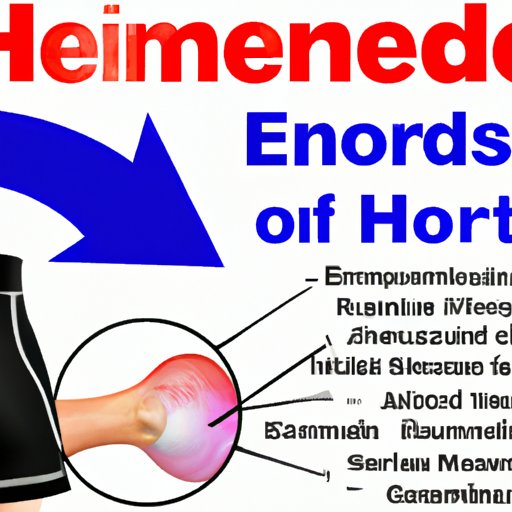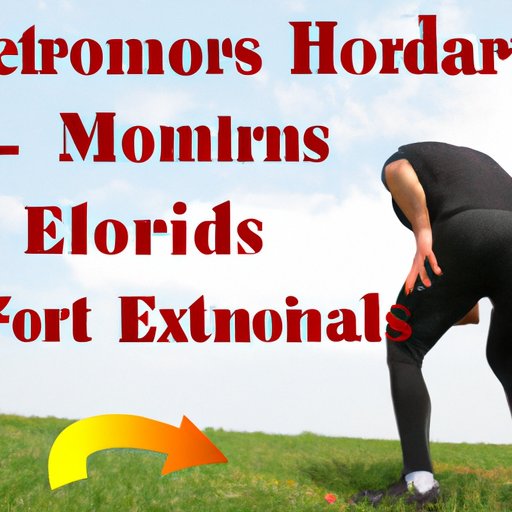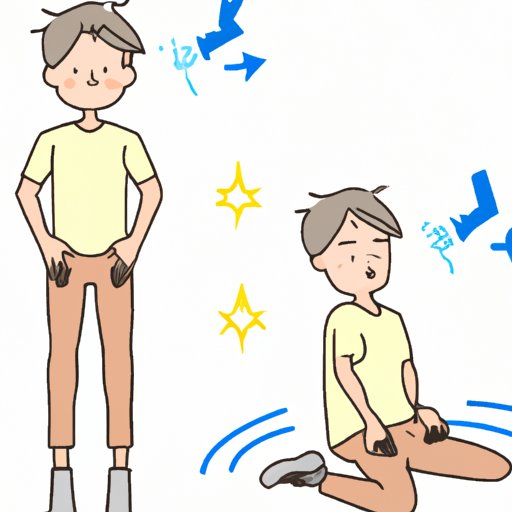Introduction
Hemorrhoids are swollen veins in the rectal area that cause pain and discomfort. While they’re common and often harmless, they can be painful and even lead to other health complications. Can exercise cause hemorrhoids? Let’s take a closer look at the potential link between exercise and this uncomfortable condition.
Definition of Hemorrhoids
Hemorrhoids are swollen veins in the rectum or anus. They can be internal or external. Internal hemorrhoids are located inside the rectum, while external hemorrhoids are located outside the anus. Symptoms of hemorrhoids include bleeding, itching, burning, and swelling in the rectal area. In some cases, they can protrude from the anus and become painful.

Overview of Exercise and Hemorrhoids
Exercise is important for overall health, but it can also put extra strain on the rectum and lower abdominal area. This can increase your risk of developing hemorrhoids. However, not all forms of exercise carry the same level of risk. Understanding the potential causes of hemorrhoids can help you make informed decisions about which activities to avoid.

The Link Between Exercise and Hemorrhoids – Exploring the Potential Causes
There are several possible causes of hemorrhoids, including pressure on the lower abdominal area and rectum, dehydration, and straining during exercise. Let’s take a closer look at each of these potential causes.
Pressure on Lower Abdominal and Rectal Area
Exercises that involve high-impact movements, such as running and jumping, can put extra pressure on the lower abdominal area and rectum. This can cause the veins in the rectal area to swell and lead to hemorrhoids. It’s important to note that not all types of exercise will have this effect. Low-impact activities, such as swimming and cycling, are unlikely to cause pressure on the lower abdominal area and rectum.
Dehydration
Dehydration can also increase your risk of developing hemorrhoids. When you don’t drink enough fluids during exercise, your body starts to pull water from other sources, including your digestive system. This can lead to constipation, which can put extra strain on the rectal area and increase your risk of hemorrhoids.
Straining During Exercise
Certain exercises, such as weight lifting, can cause you to strain your muscles, which can result in increased pressure in the rectal area. This can lead to hemorrhoids. It’s important to pay attention to your body when performing any type of exercise and to stop if you feel any pain or discomfort.
Can Working Out Lead to Hemorrhoids? A Closer Look
While exercise can be a risk factor for developing hemorrhoids, there are other factors that can increase your risk. Let’s take a closer look at some of the possible risk factors.
Possible Risk Factors
In addition to exercise, other factors that can increase your risk of developing hemorrhoids include obesity, pregnancy, sitting for long periods of time, and chronic constipation. If you have any of these risk factors, you should be aware of the potential connection with hemorrhoids and take steps to reduce your risk.
Types of Exercise That May Increase Risk
Certain types of exercise may increase your risk of developing hemorrhoids. These include high-impact activities such as running and jumping, as well as activities that require you to strain your muscles, such as weight lifting. In general, low-impact activities such as swimming and cycling are less likely to cause hemorrhoids.
How to Avoid Hemorrhoids When Exercising
If you’re concerned about developing hemorrhoids due to exercise, there are steps you can take to reduce your risk. Here are some tips for avoiding hemorrhoids when working out:
Choose Low Impact Activities
High-impact activities such as running and jumping can put extra strain on the rectal area and increase your risk of hemorrhoids. To reduce your risk, choose low-impact activities such as swimming and cycling.
Stay Hydrated
Dehydration can lead to constipation, which can increase your risk of hemorrhoids. Be sure to drink plenty of fluids before, during, and after exercise to stay hydrated.
Take Breaks During Exercise
Take regular breaks during exercise to give your muscles and rectal area a break. This can help reduce your risk of straining and developing hemorrhoids.
Use Proper Technique
When doing any type of exercise, be sure to use proper technique. This can help reduce your risk of straining your muscles and developing hemorrhoids.
Is Exercise a Risk Factor for Hemorrhoids?
Exercise can be a risk factor for developing hemorrhoids, but it doesn’t mean you have to give up working out altogether. Understanding the connection between exercise and hemorrhoids can help you make informed decisions about which activities to avoid. It’s also important to be aware of pre-existing conditions that can increase your risk.
Understanding the Connection
Certain types of exercise, such as high-impact activities and activities that require straining, can increase your risk of developing hemorrhoids. It’s important to be aware of this connection and take steps to reduce your risk. Low-impact activities such as swimming and cycling are less likely to cause hemorrhoids.
Pre-Existing Conditions
In addition to exercise, other factors can increase your risk of developing hemorrhoids, such as obesity, pregnancy, sitting for long periods of time, and chronic constipation. If you have any of these pre-existing conditions, it’s important to be aware of the potential connection with hemorrhoids and take steps to reduce your risk.
Conclusion
Exercise can be a risk factor for developing hemorrhoids, but there are steps you can take to reduce your risk. Low-impact activities such as swimming and cycling are less likely to cause hemorrhoids. Additionally, staying hydrated and taking regular breaks can help reduce your risk. Finally, it’s important to be aware of pre-existing conditions that can increase your risk of hemorrhoids. By understanding the connection between exercise and hemorrhoids, you can make informed decisions about which activities to avoid.
(Note: Is this article not meeting your expectations? Do you have knowledge or insights to share? Unlock new opportunities and expand your reach by joining our authors team. Click Registration to join us and share your expertise with our readers.)
